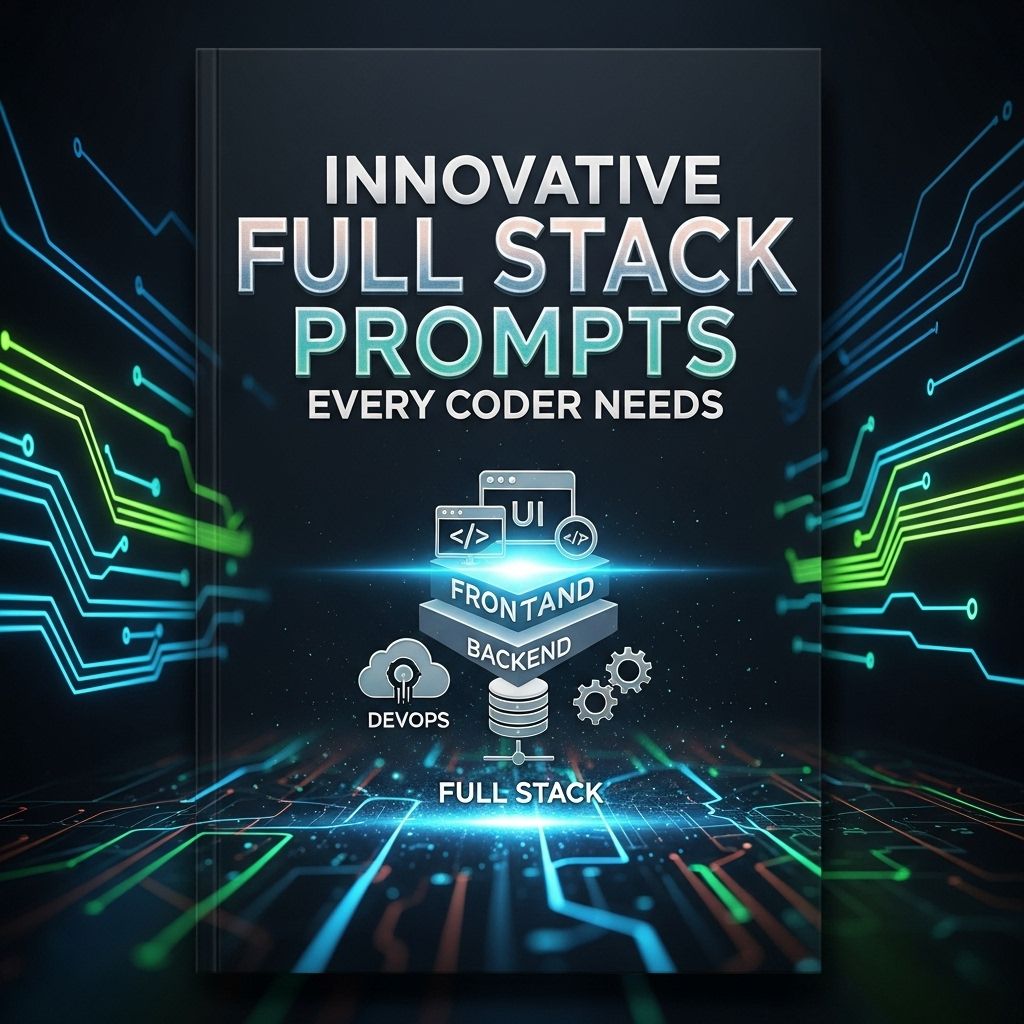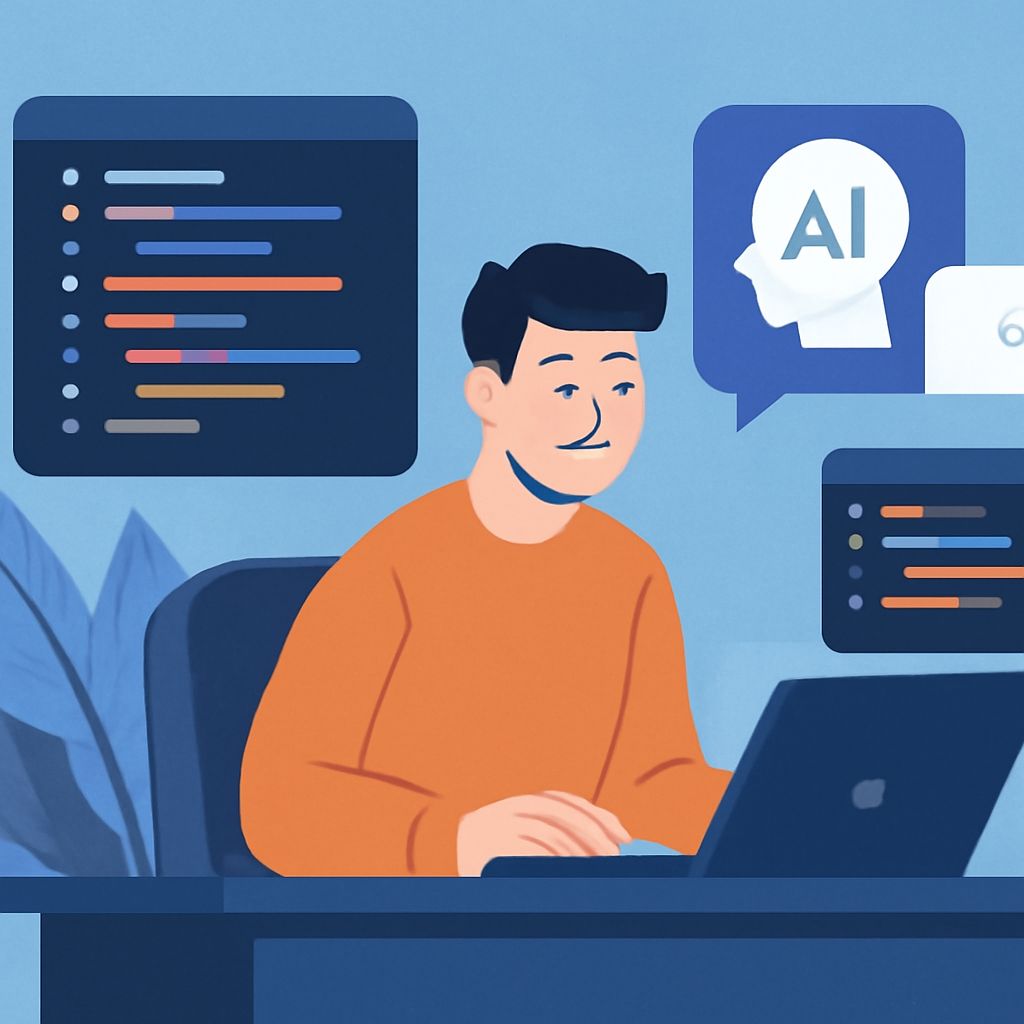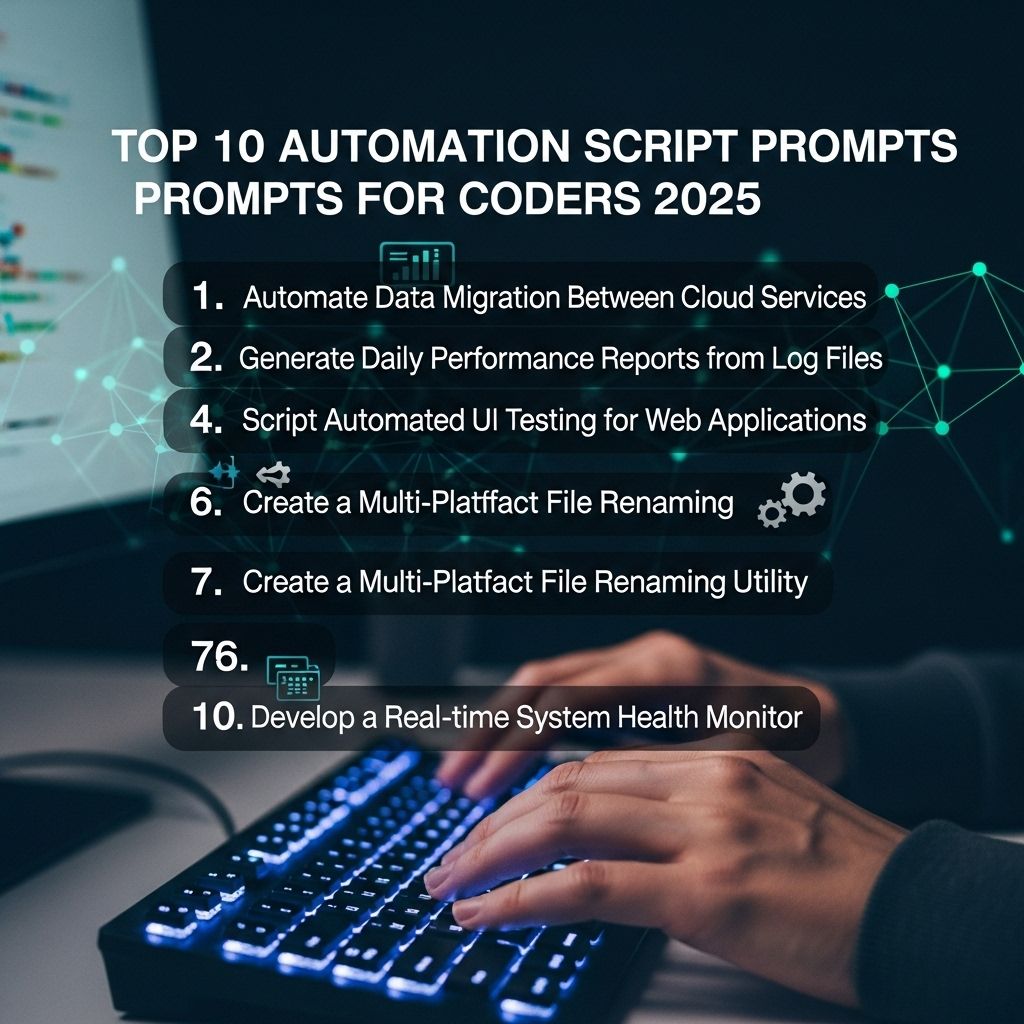In the ever-evolving landscape of technology, the demand for full-stack developers has soared. These versatile professionals are equipped to handle both the front-end and back-end aspects of web development. To thrive in this role, coders must stay ahead of the curve, embracing innovative practices and tools. This article dives deep into essential prompts and methodologies that every full-stack developer should integrate into their workflow to enhance productivity and maintain relevance in a competitive market.
Understanding Full Stack Development
Full-stack development refers to the practice of working on both the client-side (front-end) and server-side (back-end) of web applications. A full-stack developer possesses a diverse skill set that allows them to create fully functional web applications. This includes knowledge of:
- Front-end technologies (HTML, CSS, JavaScript)
- Back-end frameworks (Node.js, Django, Ruby on Rails)
- Database management (SQL, NoSQL)
- Version control systems (Git)
- Deployment and cloud services (AWS, Heroku)
Essential Tools for Full Stack Development
Choosing the right tools can significantly streamline a developer’s workflow. Here are some innovative tools and technologies every coder should explore:
1. Code Editors and IDEs
Integrated Development Environments (IDEs) like Visual Studio Code and JetBrains offer numerous extensions that can enhance coding efficiency.
- Code linting to ensure code quality
- Live server functionalities for real-time preview
- Version control integrations
2. Frameworks and Libraries
Frameworks and libraries expedite development processes. Consider the following:
| Framework/Library | Type | Best Use Case |
|---|---|---|
| React | Front-End | Building user interfaces |
| Express.js | Back-End | API development |
| Vue.js | Front-End | Progressive web applications |
| Django | Back-End | Rapid application development |
Innovative Coding Practices
To stay competitive, full-stack developers must adopt modern coding practices. Here are some key strategies:
1. Test-Driven Development (TDD)
TDD involves writing tests before actual code. This approach leads to:
- Improved code quality
- Facilitated refactoring
- Better documentation of functionality
2. Continuous Integration and Deployment (CI/CD)
Implementing CI/CD pipelines automates the testing and deployment processes, making your workflow more efficient. Benefits include:
- Faster release of features
- Reduced manual errors
- Immediate feedback on code
3. Microservices Architecture
Instead of building monolithic applications, consider breaking down functionalities into microservices, which can enhance maintainability and scalability.
Staying Updated in the Tech World
Technology changes rapidly, and developers must keep pace. Here are effective ways to stay updated:
1. Online Courses and Certifications
Numerous platforms offer courses that cover the latest technologies:
- Udemy
- Coursera
- edX
2. Tech Conferences and Meetups
Networking with peers and industry leaders at tech conferences can provide insights into upcoming trends and technologies.
3. Blogs and Podcasts
Subscribe to influential tech blogs and podcasts to gain diverse perspectives:
- Smashing Magazine
- FreeCodeCamp
- The Changelog Podcast
Building a Strong Portfolio
Having a robust portfolio is crucial in showcasing your skills. Here’s how to create an impactful portfolio:
1. Showcase Diverse Projects
Include a variety of projects that demonstrate your skills in different areas, such as:
- Web applications
- APIs
- Open source contributions
2. Write Case Studies
For each project, write a brief case study that explains:
- The problem it solves
- The technologies used
- The challenges faced and how you overcame them
3. Keep It Updated
Regularly update your portfolio with new projects and skills to reflect your growth as a developer.
Conclusion
In conclusion, being a successful full-stack developer requires more than just technical skills; it demands a commitment to continuous learning and adaptation. By embracing innovative tools, practices, and staying updated with industry trends, coders can position themselves as invaluable assets in the tech landscape. Whether you are just starting or looking to enhance your skills, integrating these prompts into your workflow can set you on the path to success.
FAQ
What is a full stack developer?
A full stack developer is a software engineer who can work on both the front-end and back-end of web applications, handling everything from user interface design to server-side logic.
What essential skills should every full stack developer have?
Essential skills for full stack developers include proficiency in HTML, CSS, JavaScript, as well as knowledge of back-end languages like Node.js, Python, or Ruby, and familiarity with databases and version control systems.
Why is it important to have innovative prompts for coding?
Innovative prompts encourage creative problem-solving and help coders practice their skills, explore new technologies, and stay updated with industry trends.
How can I improve my full stack development skills?
Improving full stack development skills can be achieved through hands-on projects, coding challenges, online courses, and engaging in community forums or coding bootcamps.
What are some examples of innovative coding prompts?
Examples of innovative coding prompts include building a personal portfolio website, creating a RESTful API, developing a real-time chat application, or designing a weather dashboard using public APIs.
Where can I find resources for full stack development prompts?
Resources for full stack development prompts can be found on coding challenge websites like LeetCode and HackerRank, as well as in developer communities on platforms like GitHub and Stack Overflow.




